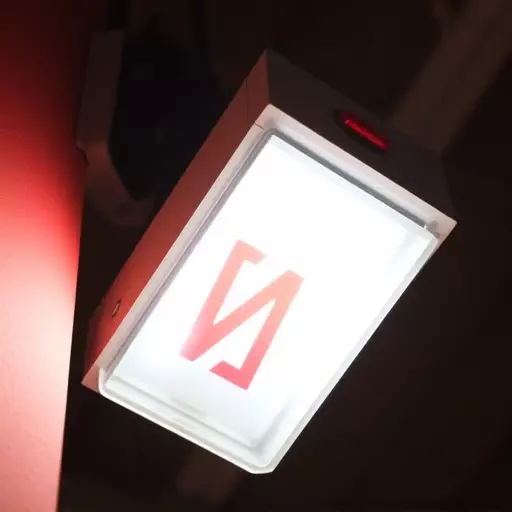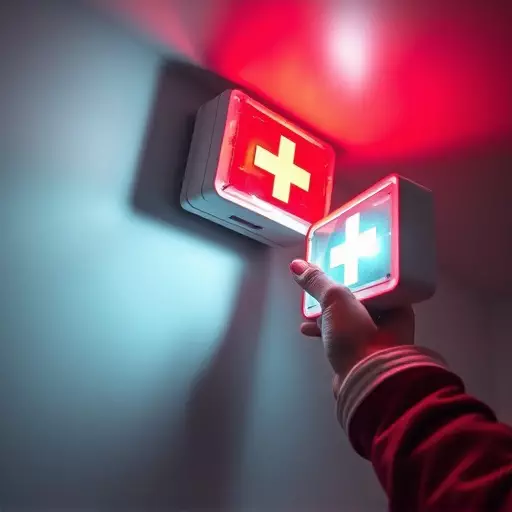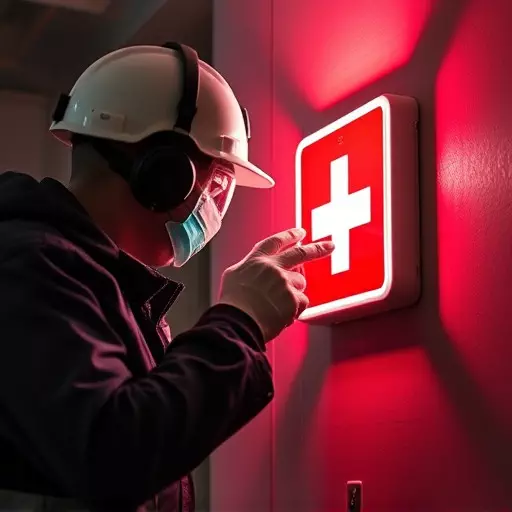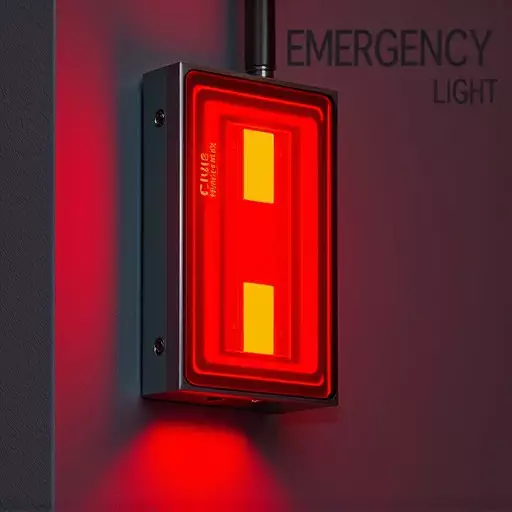Emergency light testing services are crucial for maintaining safe environments in commercial and industrial spaces. Regular inspections and comprehensive functionality tests identify issues like dead batteries, faulty wiring, or failed bulbs, ensuring these life-saving lights remain operational during power failures or emergencies. Effective testing contributes to the well-being of occupants and facility managers by offering peace of mind and adhering to safety compliance standards. Choosing reputable companies providing advanced emergency light inspection and testing services is essential for maintaining reliable, compliant lighting systems.
In today’s critical focus on safety and preparedness, emergency light testing solutions are indispensable. Effective emergency light inspection and testing ensure these life-saving systems remain operational during unexpected events. This article explores the comprehensive process of emergency light functionality testing, from understanding its paramount importance to navigating best practices for maintenance. We delve into key components assessed, common issues identified, and the evolving role of technology in enhancing testing efficiency, providing insights for facilities managers and professionals alike.
- Understanding the Importance of Emergency Light Testing Services
- Types of Emergency Light Inspection and Testing Protocols
- Key Components to Assess During Functionality Testing
- Best Practices for Regular Maintenance Checks
- Common Issues Found in Emergency Lighting Systems
- Choosing Reliable Emergency Light Testing Companies
- The Role of Technology in Enhancing Testing Efficiency
Understanding the Importance of Emergency Light Testing Services

Emergency light testing is an essential aspect of ensuring safety in various environments, from commercial buildings to industrial facilities. Regular emergency light inspection and testing play a crucial role in maintaining optimal lighting solutions during power outages or emergencies. These tests verify the functionality of critical emergency lighting systems, guaranteeing their readiness to provide guidance and illumination when needed.
By conducting thorough emergency light functionality testing, professionals can identify potential issues such as dead batteries, faulty wiring, or failed bulbs early on. This proactive approach allows for prompt repairs, ensuring that these life-saving lights remain operational. Effective emergency light testing services contribute to the overall well-being of occupants and facility managers by offering peace of mind and adhering to regulatory standards for safety compliance.
Types of Emergency Light Inspection and Testing Protocols

Emergency light testing services are crucial for ensuring safety in buildings and facilities. The process involves a comprehensive emergency light inspection and testing protocol to verify every component’s functionality. This includes examining the lighting fixtures, power sources, control systems, and emergency lights’ overall readiness for activation during a power outage or emergency. Regular testing is essential to identify potential issues like faulty wiring, dead batteries, or malfunctioning sensors early on.
There are various types of emergency light inspection and testing protocols, each tailored to specific building types and needs. These range from basic visual checks to advanced diagnostic tests that simulate emergency scenarios. Emergency light functionality testing involves checking the lights’ brightness, intensity, and duration of illumination. It also assesses the reliability of backup power sources, ensuring they kick in promptly when needed. This meticulous testing regimen is vital for maintaining a safe environment and complying with local fire safety regulations.
Key Components to Assess During Functionality Testing

When conducting emergency light functionality testing, several key components need careful evaluation to ensure reliable performance in critical situations. Firstly, assess the light source’s longevity and brightness, especially in conditions mimicking prolonged power outages. Modern LED technology often excels here, offering superior durability and consistent illumination compared to traditional incandescent bulbs.
Secondly, inspect the battery system for capacity, depth of discharge, and overall condition. Emergency light testing services typically involve simulating various discharge scenarios to gauge how effectively the batteries can power the lights during extended periods without external energy sources. Ensuring these batteries are well-maintained and meet the required specifications is vital for reliable emergency lighting.
Best Practices for Regular Maintenance Checks

Regular maintenance checks are paramount for ensuring the reliability and longevity of emergency lights. Implementing a structured routine for emergency light inspection and testing is a best practice that should be adopted by all facilities managers. These tests go beyond simple visual inspections, delving into the functionality of each light source to identify any potential issues. By conducting comprehensive emergency light functionality testing, you can uncover problems like faulty batteries, dead bulbs, or circuit failures before an emergency arises.
Such checks should be performed at regular intervals, with a frequency determined by the specific requirements of the location and its occupants. For instance, high-traffic areas or places with stringent safety regulations might necessitate more frequent emergency light testing services. Moreover, it’s crucial to document these inspections, noting any repairs or replacements made, to create a historical record that aids in future maintenance decisions.
Common Issues Found in Emergency Lighting Systems

Emergency lighting systems are critical components of any safety plan, but like all technology, they’re not infallible. Common issues can include faulty bulbs, dead batteries, or even control system malfunctions. Regular emergency light testing services and inspections are essential to ensure these systems remain operational when needed most. By incorporating comprehensive emergency light functionality testing into your maintenance routine, you can mitigate risks and guarantee reliability.
Proper testing goes beyond simply checking if the lights turn on. It involves verifying every aspect of the system’s functionality: from the reliability of backup batteries to the synchrony of flashing patterns. Professional emergency light inspection and testing services employ specialized equipment and industry-standard protocols to identify even the subtlest anomalies, ensuring your emergency lighting is always ready to serve its critical purpose.
Choosing Reliable Emergency Light Testing Companies

When it comes to ensuring safety and compliance in emergency lighting systems, choosing reliable emergency light testing companies is paramount. Look for providers that offer comprehensive emergency light inspection and testing services, capable of evaluating every aspect of your system’s functionality. Qualified experts should conduct thorough emergency light functionality testing, checking the performance of luminaries, battery backups, control gear, and more. This ensures your lights will operate as intended during a power outage or emergency.
Reputation and experience are key indicators of quality. Opt for companies with established track records, positive client testimonials, and industry certifications. They should be well-versed in local regulations and safety standards related to emergency light testing services. Regular testing is essential to maintain optimal performance and guarantee your facility’s preparedness, so partner with a company that can provide consistent, dependable service.
The Role of Technology in Enhancing Testing Efficiency

In today’s digital era, technology plays a pivotal role in enhancing efficiency across various industries, and emergency light testing services are no exception. Advanced tools and software have revolutionized emergency light inspection and testing procedures, enabling professionals to conduct thorough assessments swiftly and accurately. By leveraging innovative solutions, experts can streamline the entire process, from identifying potential issues to verifying emergency light functionality testing results.
These technological advancements offer numerous benefits, including increased speed, improved precision, and reduced human error. With automated systems, regular maintenance routines can be scheduled and monitored efficiently, ensuring that emergency lighting remains operational during critical situations. As a result, organizations can rest assured that their safety protocols are up-to-date and effective, fostering a secure environment for all occupants.


